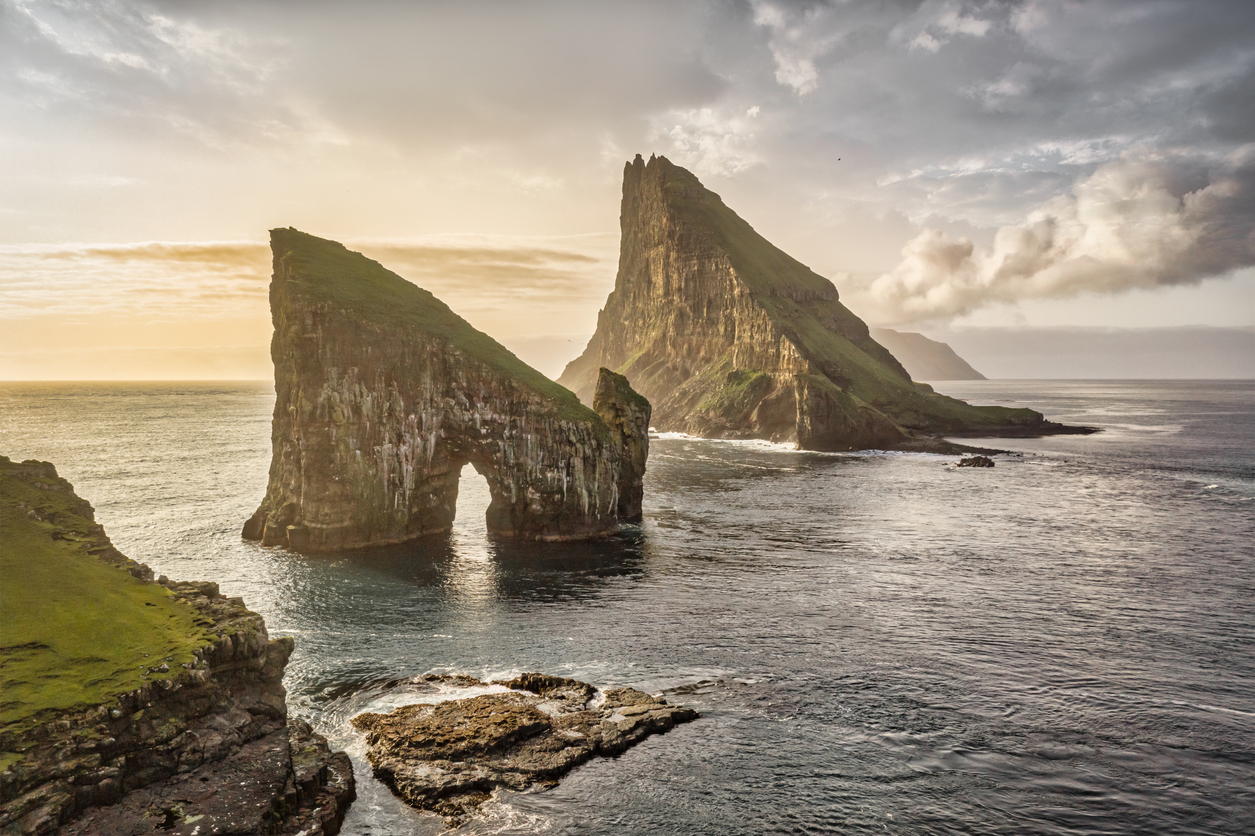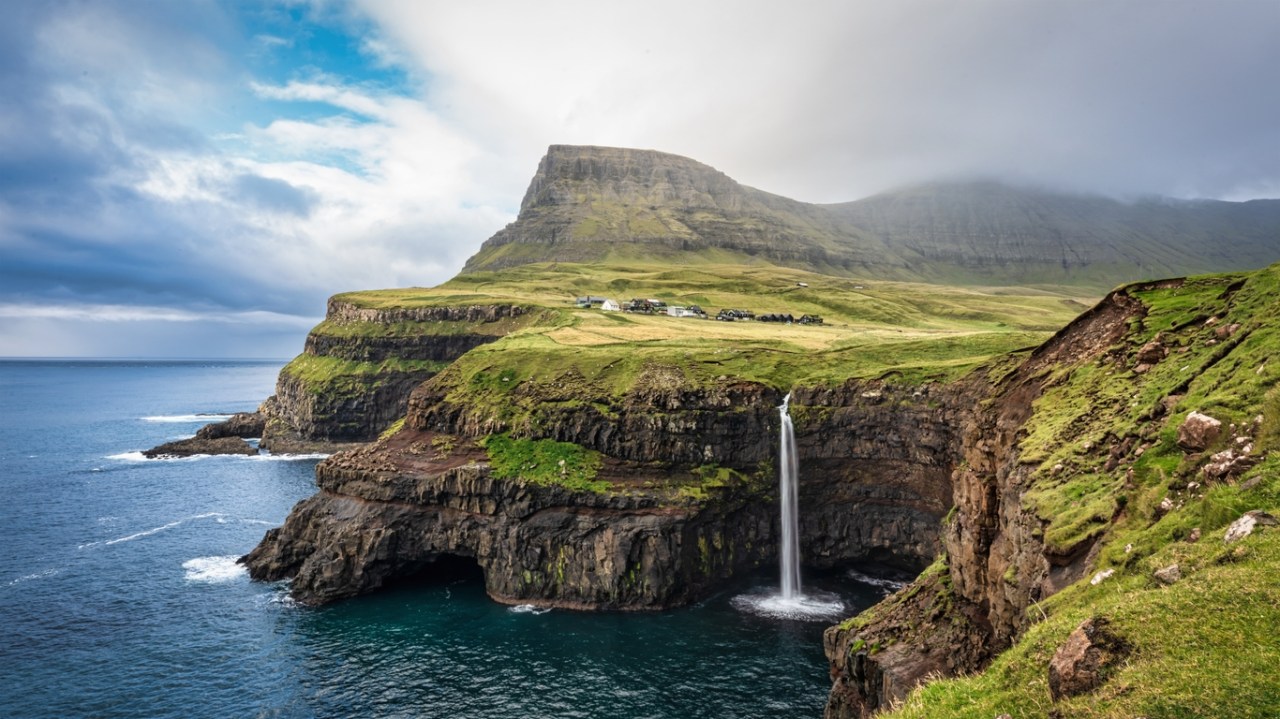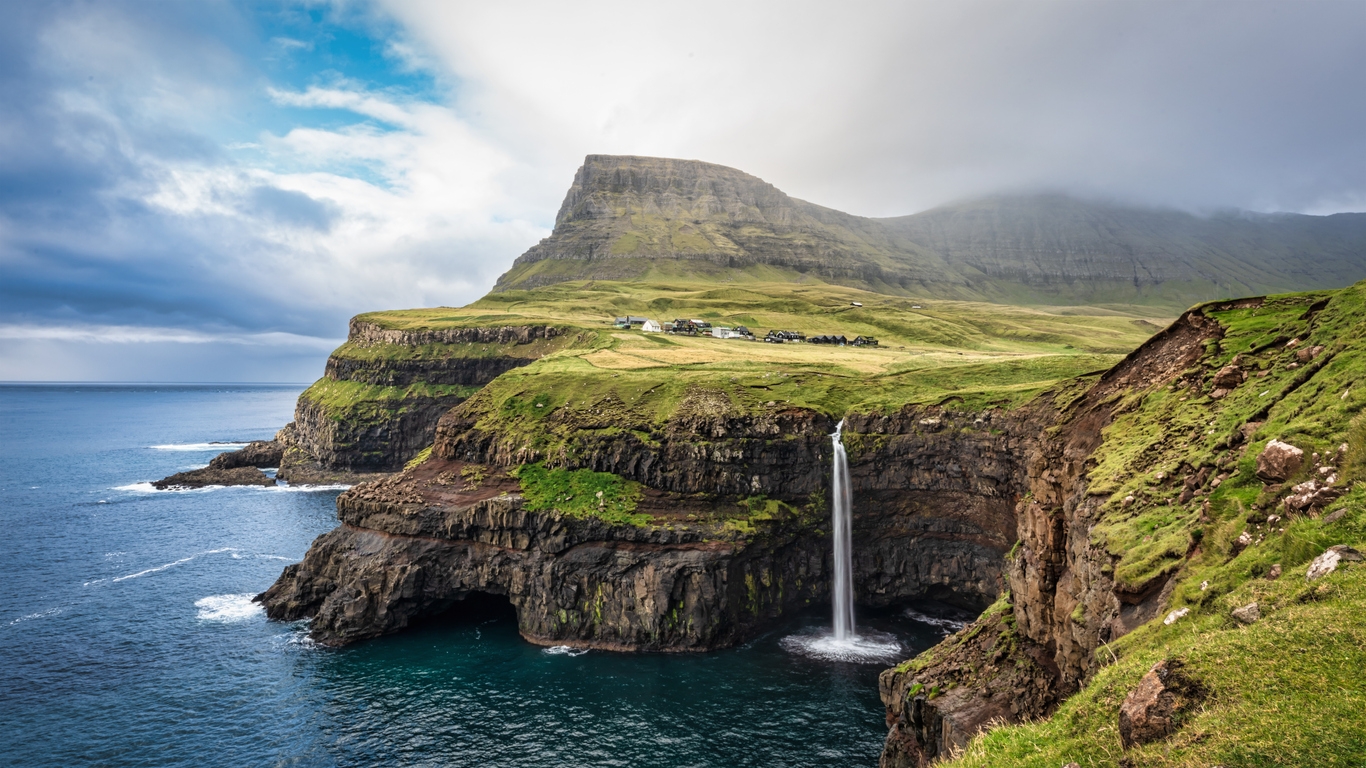Before its elevation to the undeniably slim Green List, the isolated windswept, wave-lashed archipelago of volcanic rock in the North Atlantic Ocean known as the Faroe Islands was not on many people’s radars. With direct flights from the UK recommencing on July 1, no doubt its popularity will surge in the coming months. Even before Covid, tourism had doubled within five years and it was increasingly being dubbed ‘the new Iceland’.
Centred between Scotland, Norway and Iceland, this dramatic and windswept territory is not to all tastes. It rains here for 300 days a year and winds are so fierce and common that virtually no trees grow.
Yet if you like stunning scenery made up of dramatic cliffs, gloriously wild mountains and deep, lush green valleys, the 18 islands, with a combined population of just 52,000 – and 70,000 sheep – will tick all the boxes. Its landscapes are so spectacular that the Faroes feature in the upcoming new James Bond film, No Time to Die. Naturally, a James Bond sightseeing tour has duly been created.
Biking, hiking, fishing, diving, surfing and horse riding are all popular here, while bird-watchers flock to see a wealth of seabirds, including puffins, guillemots, kittiwakes, fulmars and Arctic terns. A boat trip to Vestmanna on northern Streymoy, the largest island, or the secluded island of Mykines, is ideal for spotting seabirds.
Centuries-old mountain paths link many villages, and excellent website bygdagotur.fo details numerous hikes by length, duration and difficulty.
The pretty capital, Tórshavn (‘Thor’s Harbour’), on Streymoy, is one of the world’s smallest. Amongst the turf-topped timber houses is a cluster of old red-painted wood buildings, which constitute the Parliament. Now a semi-sovereign country that is part of the Kingdom of Denmark, the Faroe Islands have in the past been inhabited by Irish monks and Viking settlers. Yet unlike Denmark, the islands are not part of the EU. They have their own currency, pegged to the Danish kronor, and their own language, Faroese, a variant of Old Norse, similar to Icelandic and one of only two Viking languages still existing today.
As well as a handful of cafés, restaurants and surprisingly lively bars, Tórshavn has boutique shops selling arts, crafts and upmarket knitwear. For a dose of culture, dip into the national gallery, and for live music head for The Nordic House.

It’s easy to travel around the Faroes, with its excellent, quiet roads, as well as ferries, buses, causeways and even a government-subsidised helicopter service. You wouldn’t normally count a road tunnel as a tourist attraction – a number of cave-like ones connect islands with each other – but the newest, the seven-mile Eysturoy Tunnel, is almost an artwork, being colourfully illuminated and featuring the world’s first undersea roundabout.
You will want to sample the Faroese cuisine whilst you’re here. It developed from a meagre availability of ingredients, top-heavy with seabirds, and with vegetables being scarce. Whale has been an essential part of the islanders’ survival for centuries, although nowadays local sources are apparently so riddled with mercury it is no longer considered fit for human consumption. The gruesome annual Faroese summer pilot whale slaughter, the grindadráp, attracts considerable controversy.
Traditional Faroese fare tends to be out of this world, in the sense that it is almost of another world. For example, skærpekød is lamb, wind dried, cured and fermented for up to nine months in special wooden sheds called hjallur. While similar in appearance to parma ham, the presence of penicillium mold gives it an intense blue cheese flavour that is certainly an acquired taste. Ræst, in Tórshavn, is a celebrated restaurant offering this traditional cuisine.

Despite restaurants being a rarity until around the turn of this century due to it being illegal to serve alcohol in them until 1992, there’s an impressive choice now. Cosy, charming, candle-lit Áarstova is renowned for its slow-cooked Faroese lamb, fish lovers will appreciate Barbara Fish House, and good sushi is on offer at etika. All are located in Tórshavn.
Two Michelin star Koks, rurally located a short drive away from the capital in Leynavatn, is outstanding. Housed in an eighteenth century farmhouse, it throws a supremely imaginative, contemporary slant on ancient Faroese practices such as foraging, drying, fermenting, salting and smoking to create radically varied dishes such as glazed shark with compressed nettle, red seaweed with blueberry flakes, shaved horse mussel with cod, and a rhubarb compote between nasturtium leaves.
Before leaving the Faroes I visited the ancient settlement of Kirkjubøur and its church, St Olavs, the Faroes’ oldest, built before 1200. Being Lutheran, it’s rather plain and has no flourishes, but is delightful all the same. I then dropped in on shepherd Jóannes Patursson at his beautiful old wooden farmstead nearby, to hear more about the whales and farming in this tough environment. His family first came to the farm in 1557, making him the 17th generation there. Around him the room was decorated with whale vertebrae, each a foot high.
‘Historically, blubber, the fat from whales, was a vital part of the Faroese diet as it provided 6000 calories per day, which was needed to survive and work effectively in the harsh conditions,’ Jóannes explained. ‘Everyone was given the same amount of food, whether you were an old man or young child.’ His family regularly eat whale blubber to this day. Farming presents a continual challenge: ‘Shearing costs 20 Kronor (£2) per sheep,’ he said. ‘The wool is worth less and we can’t sell it. It’s easier to burn it. And my cows eat anything, even Christmas trees. Once I had to ring the council as I’d seen a Christmas tree vandalised. They then worked out that one of my cows had escaped and ate what it could of the tree. I found the cow wrapped in Christmas lights.’
Getting there
Atlantic Airways (atlantic.fo ) flies twice-weekly from Edinburgh to Vágar
Faroe Islands tourist board visitfaroeislands.com
Reading
Faroe Islands (Bradt Guides, £16.99); The Land of Maybe: a Faroe Islands Year (by Tim Ecott, Short Books, £14.99)







Comments